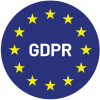In the age of digital communications, fast content is coming at us from all sides. So while you might still have the latest edition of The New York Times being dropped off at your doorstep, for many, that’s an artifact from the same era as dinosaurs. Instead, we live in a virtual “universal village” where any and all news can reach us at any time.

According to CNN and other 24/7 news sources, everything is breaking news. Moreover, the tech environment and social media channels have attracted the always-connected attention of more than 2.4 billion internet news seekers. Therefore it reflects that Facebook, Twitter, YouTube, Snapchat, and Instagram are the primary sources for 64.5% of this number.
News seeking habits in the USA
Looking only at the US, we see that:
- 43% of the entire adult population relies on Facebook for their daily news updates.
- This is followed by YouTube (21%), Twitter (12%), Instagram (8%), and Linkedin (6%).
- Other big ones in the mix include Reddit, Snapchat, and Whatsapp.
In addition, a 2018 survey of internet user respondents confirmed that social media:
- Transmits the latest events well before breaking on cable news stations.
- Drives many users to hear more from the mainstream news studios (i.e., a confirmation backdrop, if you will).
How much attention do people pay to the news?
Not much at all.
People these days are on the go, moving from one project to the next. They struggle to find more leisure time and generally deal with mounting stress.
While the COVID-19 transformations released a lot of pressure, giving us added family interconnection with remote working, everything still seems to be on speed dial. Time remains our most coveted commodity.
As a result, people are scrolling content, looking for the snippets that sum up the entire narrative. They love headlines and short video clips about the topics they’re interested in. The yadda-yadda-yadda in between? Not so much. The average social media visitor, it turns out, has an attention span of:
-
- 15 seconds or less in viewing an article
- 10 seconds when viewing a video
What do you think this could mean for businesses? The smallest rumor can disrupt your online reputation, and you need to keep an especially close eye on brand mentions – after all, prospects and customers are not interested in the details, just the headlines of what might’ve happened.
So, who’s controlling the newsfeed?
Social media fuels lightning-fast “news-gathering” trends better than any other medium. The algorithm can help both to control what people see and hear AND to highlight headlines and taglines to create an impression, irrespective of any support material in the smaller print.
One of the biggest drivers in the news channeling process is the number of “likes” attached to any content. Without that, it’s unlikely to attract anyone’s attention. What does this mean? If you cut to the chase, social media, fueled by the validation of friends, dictates what people see and don’t. As a result, false or factual, that’s what is controlling the narrative – and often how your online reputation is shaped.

Is fake news a mainstream industry today?
Yes, indeed!
It’s a thriving money-making machine. It starts with the realistic notion that most people will believe anything if the rumor mill can say it the right way. Therefore, the more sensational and ridiculous the headlines, the more likely it is to get attention.
Fake news social media outlets are fully aware that fact-checking is rare amongst their readers. Consequently, they see themselves as illusionists in a way. Why? Because once the story goes viral, the “fake” magically transforms into the truth. This invariably impacts the credibility of real news as well.
So, how do we establish authenticity? Authentic content remains the domain of the news doyens like CNN, BBC, Reuters, and Forbes (to mention a few) even though their newscasts have a political leaning.
While it can be difficult to tell what’s really true sometimes, real news isn’t iffy when substantiated by a fact check. Keep in mind, though, even vetted information may carry the commentators’ personal opinions in between the lines.
How far afield has the fake news epidemic spread?
Lies easily override facts because they come with more emotional connection, thus creating an audience base. Buzzfeed, with over 17 million subscribers, is an excellent example. It’s like a rolling snowball gaining momentum in an industry churning out more and more mad-hatter stories.
Sinan Aral of MIT wrote in the journal Science that the fake news dynamics are most prolific in political circles. However, it cuts across almost every vertical, including entertainment, terrorism, cybersecurity, natural disasters, financial happenings, urban legends, and more.
This directly impacts business in the form of fake reviews from detractors and even competitors, rumors taking flight and demotivating prospects, all while affecting brand reputation.

How can businesses cope?
Fake news spreads like wildfire, and the best way to cope with it is to be vigilant.
Enlist social listening tools to always be on the lookout for brand mentions across the IoT. Focus experts to immediately respond to customer reviews and be sure to engage your customers – especially on social media, since it remains one of the most visible avenues, and therefore imperative in shaping your brand’s narrative.
However, the first step to fighting lies is to establish trust. If your businesses has repeatedly shown up for your customers, negative reviews and lies can prove futile, and it won’t matter what “they” have to say!
Conclusion
Worried about managing your online reputation? Social media ‘news’ can make or break your brand. Today, the internet has made it incredibly easy for customers to speak on a global megaphone at any time of day or night.
As a result, it’s essential for you to begin by establishing trust. Focus on creating a strong relationship with your customers, ask them for feedback, understand market perception about your brand, and focus on tackling the key concerns.
When customers see you making the effort, it will be easier for them to dismiss the fake news that paints your business in a negative light. Want to connect better with your customers and build long-lasting relationships? Contact us to improve your customer experience strategy and create experiences that leave an impression!














